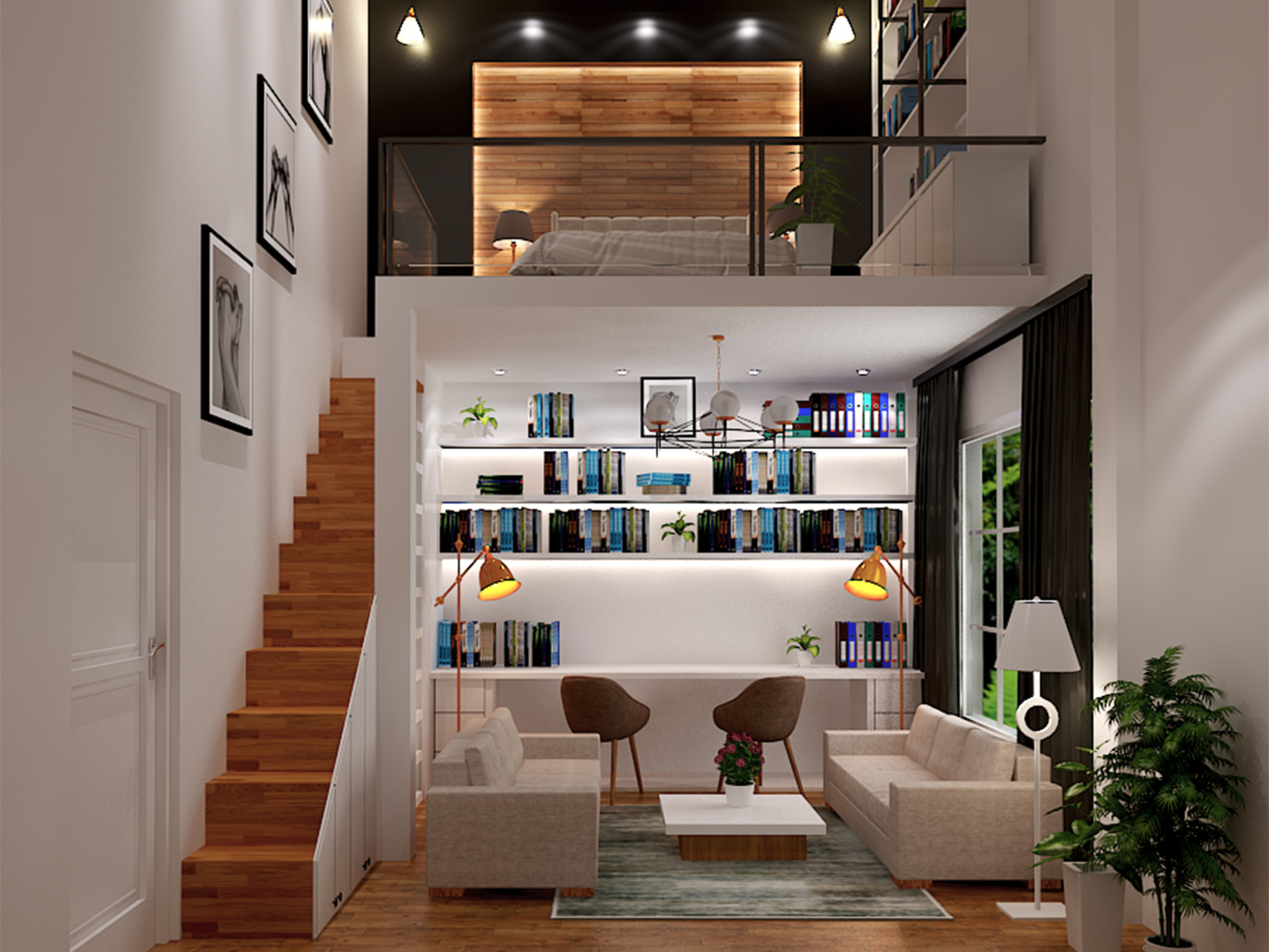Mezzanine Floor as a Design Feature: House Bedroom Mezzanine Floor

The addition of a mezzanine floor to a bedroom is more than just a structural enhancement; it’s a design statement that elevates the space both literally and figuratively. It transforms the bedroom into a multi-level haven, introducing a sense of grandeur and versatility that’s hard to achieve with a conventional layout.
Defining Zones with a Mezzanine Floor
A mezzanine floor acts as a natural divider, creating distinct zones within the bedroom, each with its unique purpose and ambiance. The lower level can be dedicated to relaxation and sleep, featuring a plush bed and calming decor, while the mezzanine can be transformed into a workspace, a reading nook, or a stylish dressing room. The strategic placement of the mezzanine can guide the flow of the space, directing movement and creating a sense of visual hierarchy.
Lighting for Mezzanine Floor Enhancement
Lighting plays a crucial role in accentuating the architectural drama of a mezzanine floor and defining the character of each zone.
- Accent Lighting: strategically placed spotlights or sconces can highlight architectural features like beams, railings, or the unique shape of the mezzanine itself. This creates a dramatic and visually appealing effect, drawing attention to the design element.
- Task Lighting: focused lighting is essential for functional areas like a workspace or reading nook. Desk lamps, pendant lights, or track lighting can be used to provide adequate illumination for specific tasks, ensuring comfort and efficiency.
- Ambient Lighting: soft, diffused lighting creates a welcoming atmosphere, especially in the sleeping area. Recessed lighting, chandeliers, or floor lamps can be used to create a sense of warmth and intimacy, enhancing the overall ambience of the bedroom.
Creating a Custom-Designed Mezzanine Floor, House bedroom mezzanine floor
- Assess the Space: The first step is to meticulously measure the bedroom and determine the ideal location and size for the mezzanine. Consider the existing layout, the height of the ceiling, and the overall architectural style of the bedroom.
- Define the Purpose: Determine the primary function of the mezzanine. Will it be a workspace, a reading nook, a dressing room, or a combination of these? This will influence the design, materials, and lighting choices.
- Choose Materials: The choice of materials should complement the existing design aesthetic of the bedroom. Wood, metal, glass, or a combination of these can be used to create a unique and cohesive look. The materials should be durable and aesthetically pleasing, ensuring the longevity and visual appeal of the mezzanine.
- Plan the Access: Carefully consider the access to the mezzanine. A staircase, ladder, or a combination of both can be used, depending on the space available and the overall design concept. Ensure the access is safe, functional, and aesthetically pleasing.
- Integrate Lighting: Plan the lighting scheme to complement the design and function of the mezzanine. Consider using a combination of accent, task, and ambient lighting to create a balanced and visually appealing effect.
